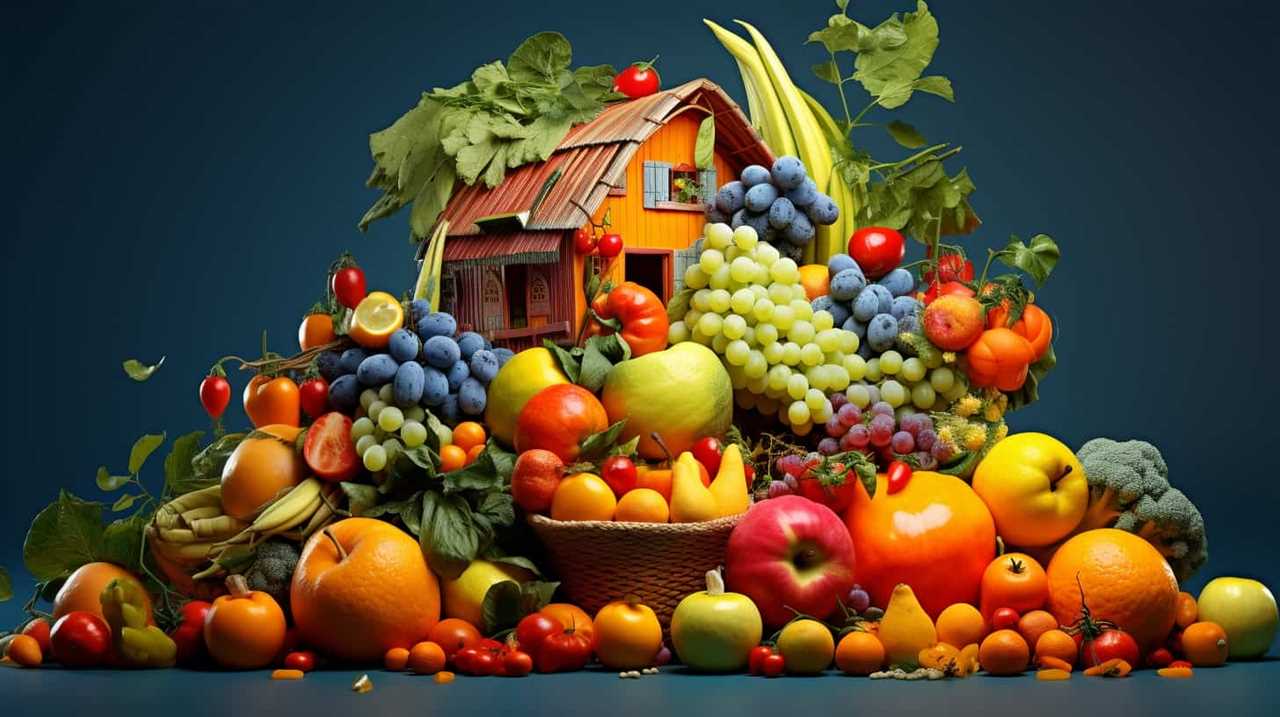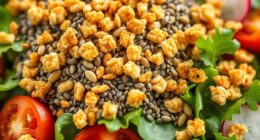
We have some exciting information to share with you about the profit opportunities in commercially cultivating super seeds.
Did you know that the market demand for chia seeds has been steadily increasing?
In this article, we will analyze the cost of production, potential yields, and profit margins in chia seed cultivation.
We will also explore the factors that influence the profitability of this industry.
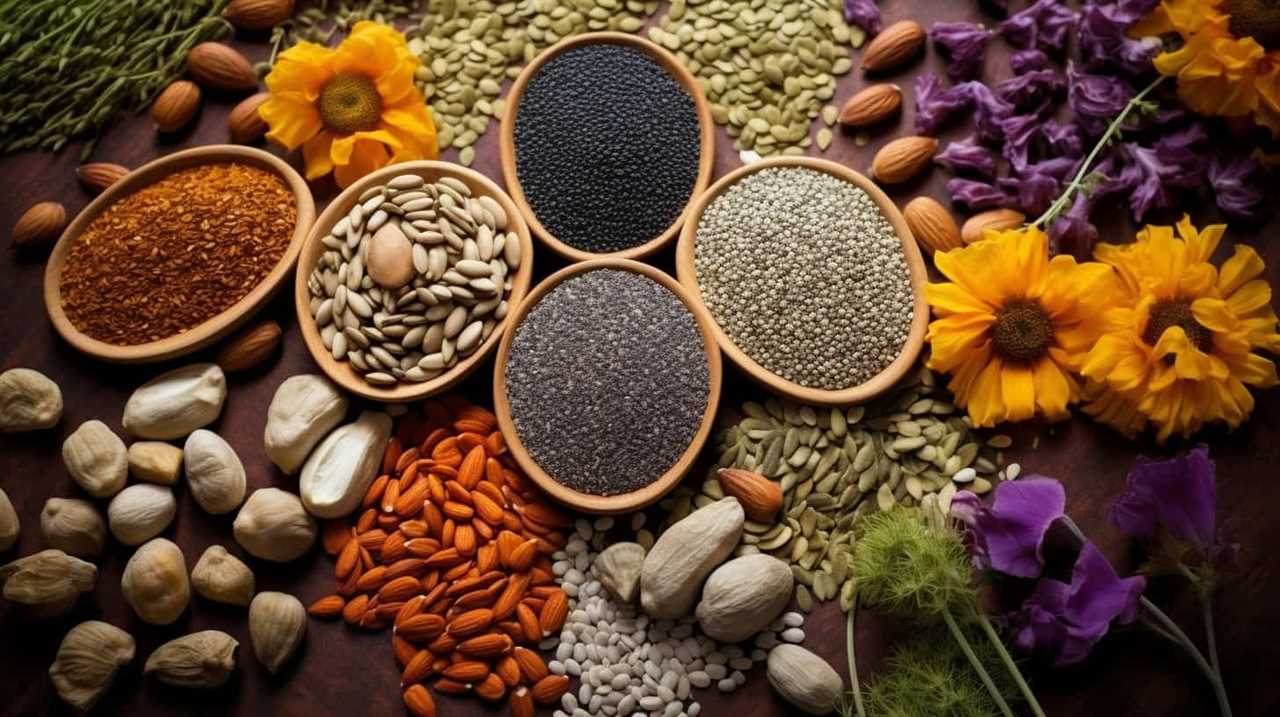
So, get ready to dive into the world of super seeds and uncover the secrets to success!
Key Takeaways
- Market demand for chia seeds has been steadily increasing due to growing awareness of their health benefits.
- Farmers have adopted innovative farming techniques to meet the rising demand, leading to increased profitability.
- Sustainable farming practices such as crop rotation, efficient irrigation systems, and proper nutrient management can enhance profitability in chia seed cultivation.
- Profitability in chia seed cultivation provides financial resources for expansion, research and development, job creation, and contributes to the local economy.
Market Demand for Chia Seeds
We have observed a significant increase in the market demand for chia seeds in recent years.
This surge can be attributed to the growing awareness of the numerous health benefits associated with chia seeds. Chia seeds are rich in omega-3 fatty acids, fiber, and antioxidants, making them a popular choice among health-conscious consumers.
Additionally, chia seeds are gluten-free and can be easily incorporated into various recipes, further adding to their appeal.
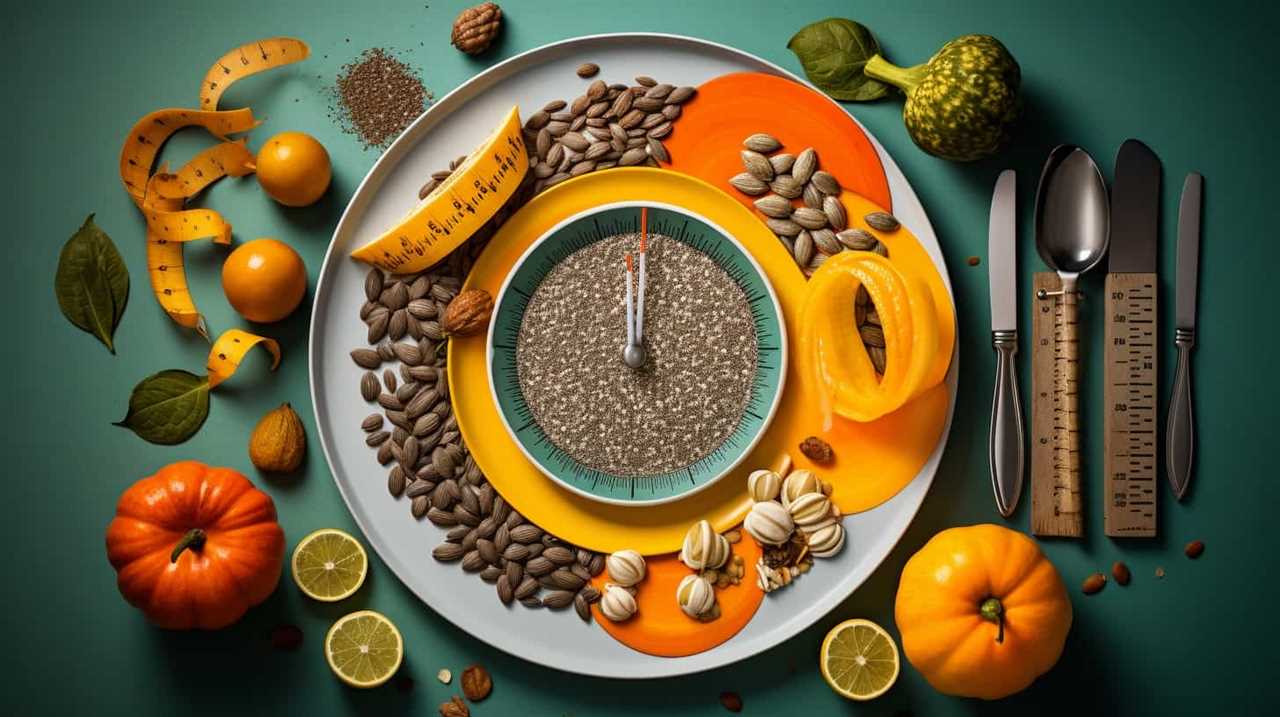
As a result, the demand for chia seeds has skyrocketed, leading to higher prices and increased profitability for chia seed farmers.
To meet this rising demand, farmers have adopted innovative farming techniques, such as precision seeding and sustainable irrigation practices, to maximize yield and quality.
This combination of health benefits and efficient farming techniques has made chia seeds a lucrative crop for farmers in the current market.
Cost of Commercial Chia Seed Production
Having observed the significant increase in market demand for chia seeds, our team delves into the cost of commercial chia seed production. Cultivating chia seeds comes with its own set of challenges. The cultivation process requires specific conditions such as well-drained soils and sufficient sunlight. Additionally, chia plants are susceptible to pests and diseases, which can impact yield and increase production costs. Sustainability practices play a crucial role in chia farming. Implementing organic farming methods, conserving water through efficient irrigation systems, and promoting biodiversity are essential for long-term sustainability. These practices not only ensure the quality of the chia seeds but also contribute to a healthier environment. To provide a clear comparison of costs, we have compiled the following table showcasing the average expenses involved in commercial chia seed production.
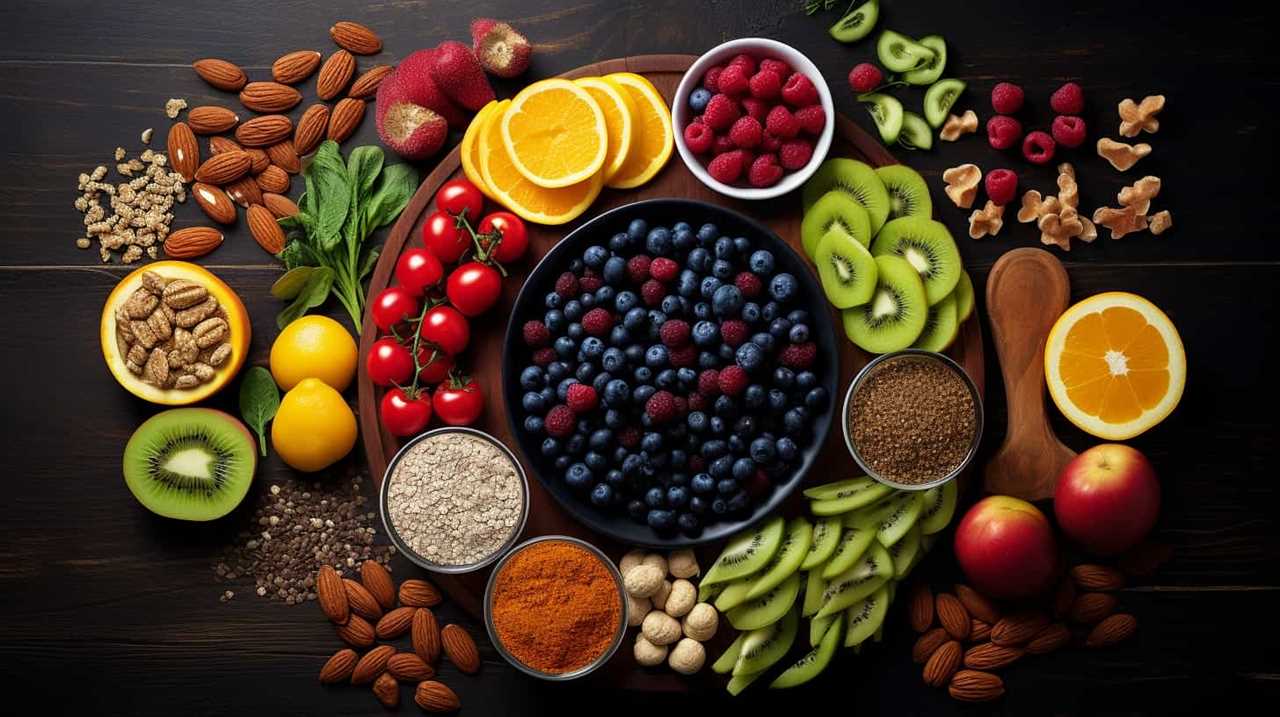
| Cost Component | Average Expense ($) |
|---|---|
| Land | 10,000 |
| Seeds | 5,000 |
| Labor | 8,000 |
Potential Yields of Commercial Chia Farming
To assess the profitability of commercial chia farming, we’ll now explore the potential yields of this cultivation method. When it comes to chia cultivation, there are several challenges that farmers face, including unpredictable weather patterns, pests, and diseases. However, with the use of sustainable farming techniques, these challenges can be mitigated.
Here are three key points to consider:
- Crop rotation: By rotating chia crops with other plants, farmers can prevent the buildup of pests and diseases in the soil. This promotes healthier plants and higher yields.
- Efficient irrigation: Water is a precious resource, and using efficient irrigation systems can ensure that chia plants receive the right amount of water without wastage. This not only saves water but also enhances the overall yield.
- Proper nutrient management: Chia plants require specific nutrients to thrive. By implementing sustainable practices such as organic fertilizers and soil amendments, farmers can ensure that their chia crops receive the necessary nutrients for optimal growth and yield.
Profit Margins in Chia Seed Cultivation
The profit margins in chia seed cultivation depend on various factors, including market demand, production costs, and yield per acre. Chia seeds have gained popularity due to their nutritional benefits, which include high levels of omega-3 fatty acids, fiber, and antioxidants.
The increasing demand for chia seeds in the health food market has led to higher prices, resulting in potentially higher profit margins for farmers. However, production costs can significantly impact profitability. Factors such as land preparation, seed acquisition, irrigation, and labor costs can all contribute to the overall expenses.
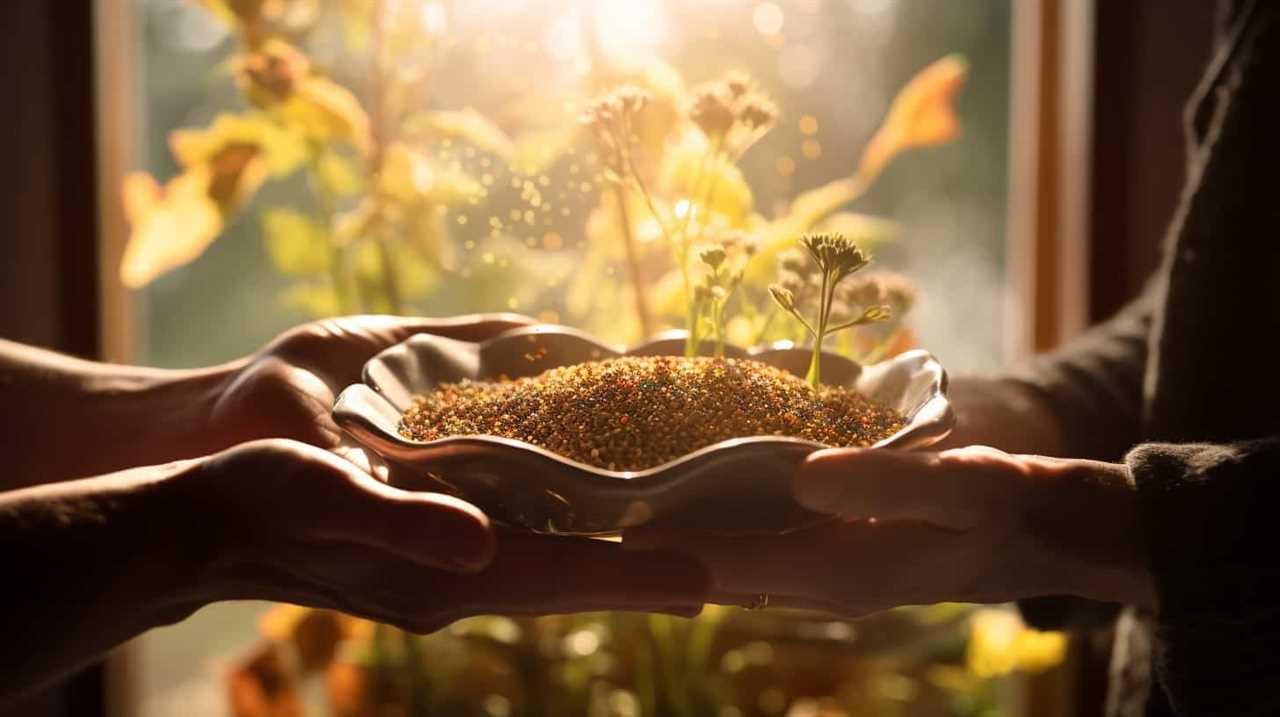
Additionally, implementing crop rotation benefits both the soil and the yield, reducing the need for chemical fertilizers and pesticides, further improving profit margins.
Factors Influencing Chia Seed Profitability
Market demand, production costs, and yield per acre are key factors that influence the profitability of chia seed cultivation. Understanding these factors is crucial for farmers and investors seeking to maximize their returns.
Market competition: The level of competition in the chia seed market directly affects profitability. High competition can lead to lower prices and reduced profit margins. It’s important to analyze the market dynamics and identify strategies to differentiate and position the product effectively.
Production costs: Managing production costs is essential for profitability. Factors such as land, labor, equipment, and inputs can significantly impact the overall cost of cultivating chia seeds. Implementing cost-efficient practices and optimizing resource allocation can help reduce expenses and increase profitability.
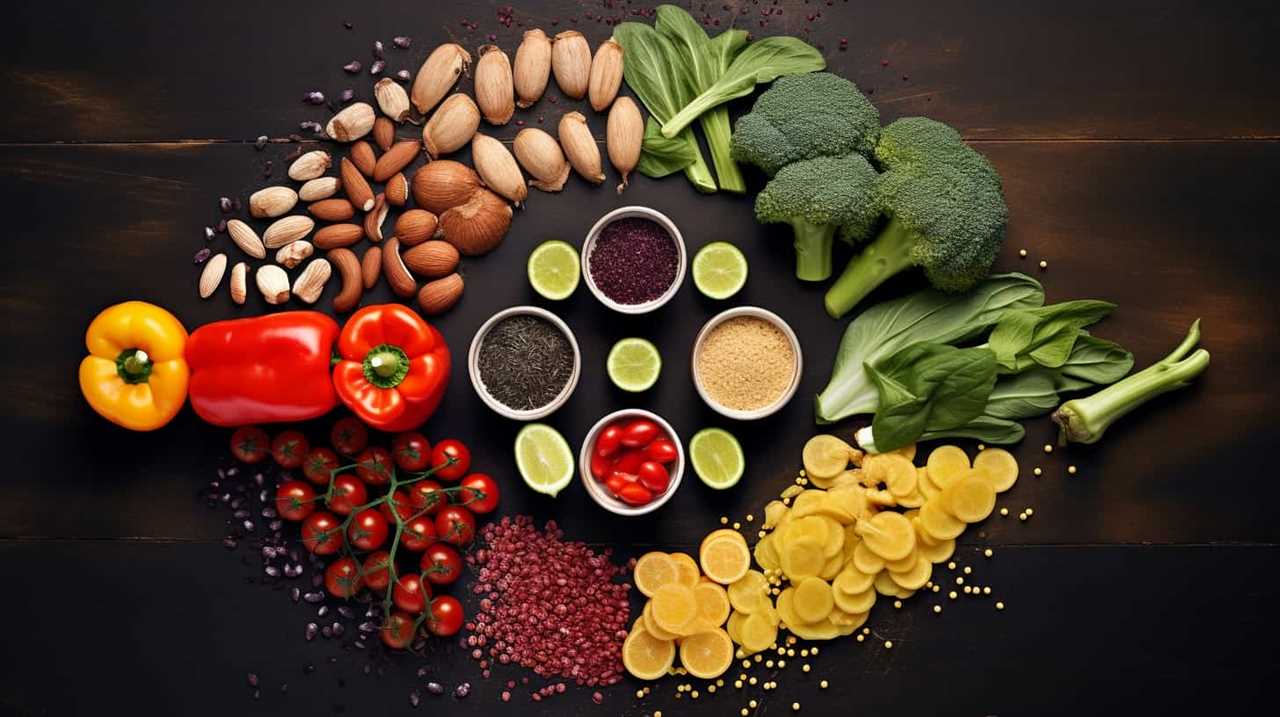
Quality control: Maintaining high quality standards is vital for success in the chia seed market. Ensuring that the seeds meet the required specifications in terms of size, color, and nutritional content is crucial. Quality control measures, such as regular testing and certification, can help build a strong reputation and attract premium buyers.
Conclusion
In conclusion, the profitability of commercial cultivation of super seeds, such as chia seeds, is a topic of great interest due to the market demand and potential yields.
However, it’s crucial to consider the cost of production and market competition when assessing profit margins.
Factors such as climate conditions and farming techniques also play a significant role in determining the profitability of chia seed cultivation.
Further research and analysis are needed to fully understand the dynamics of this industry and its potential for success.



